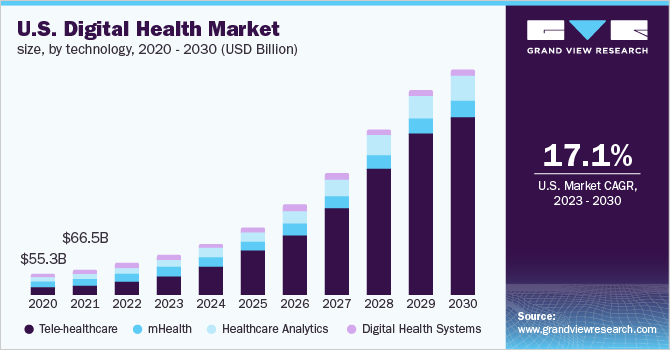DQ 2 Response to Cerelina Maratas
Hello Maratas, (Digitizing the U.S Healthcare System)
Thank you for the great post. I agree that digitizing the U.S. healthcare system is a priority, and rightly so. Despite how significantly digital technology has changed our daily lives, even the most basic healthcare information technology (I.T.) has been slow to gain traction in the United States healthcare system. Only 22% of office-based doctors and 12% of non-federal acute care hospitals in 2009 had a basic electronic medical record (EMR) system, even though almost 75% of Americans had a computer at home.
The Health Information Technology for Economic and Clinical Health (HITECH) Act of 2009 was created after the U.S. government decided to employ policy to bridge this obscene technical gap. Most healthcare decisions are data-driven, considering the increasing patient-generated health data. Therefore, increasing adoption of technologies like EHRs is needed to ensure meaningful use of Big Data in healthcare (Digitizing the U.S. Healthcare System).

I agree that, although technology has created disparities, it has helped bridge others, including increased access to healthcare through telehealth. Increased patient education and training on health technology can help address the issues you have highlighted, including low digital health literacy and low engagement with digital health. Bolstering internet infrastructure is also critical to this initiative (Digitizing the U.S Healthcare System).
Reference
Gassner, R. (2019). Cerner and the Digitization of U.S. Healthcare Data. Technology and Operations Management.
D.Q. 2 Reply to Jill Blake (Digitizing the U.S Healthcare System)
Hi, Blake.
Thank you for an insightful and educative discussion. Indeed, healthcare communication has transformed significantly, attributed to increased technological advancement and adoption in the healthcare field. The COVID-19 pandemic increased the utilization of healthcare technology, including telehealth and digital communication, to minimize physical patient-physician engagements (Digitizing the U.S Healthcare System).
I agree that telehealth adoption has been slow, especially in rural areas, due to limited internet access and other supporting infrastructure. Other obstacles include licensing restrictions, socio-cultural issues, limited healthcare and digital literacy, and ethical issues surrounding data security (Digitizing the U.S. Healthcare System).
However, reducing health inequities in places with poor physician access is one of telehealth’s most effective applications. Only 9% of doctors practice in rural areas, yet 20% of the population of the United States lives (Mechanic et al., 2022). Transport expenses, which frequently put a strain on patients with low socioeconomic status, are eliminated with telehealth (Digitizing the U.S Healthcare System).
Offering patient education and ensuring drug adherence can decrease hospitalizations and promote health literacy through comparable methods. Telehealth is predicted to expand access while saving the U.S. healthcare system more than $4 billion yearly (Mechanic et al., 2022). Finally, technology utilization may result in fewer referrals, more efficient medical evaluations, and a lighter load for some diseases that can be prevented (Digitizing the U.S Healthcare System).
Reference
Mechanic, O. J., Persaud, Y., & Kimball, A. B. (2022). Telehealth systems. StatPearls [Internet].
D.Q. 2 Response to Pamela Davidson-Gordon
Hello, Pamela.
Your discussion is persuasive and through-provoking. I have gained valuable insights into communication technology in healthcare and its value. I agree that the increased adoption of mobile technologies in healthcare has made it possible to increase healthcare access for diverse populations. Such technologies include remote patient monitoring (RPM) and telehealth. Indeed, disparities exist in adopting mobile health applications, especially the digital gap between rural and urban areas and between older and younger people. Addressing these disparities would promote care equity and fairness for all Americans (Digitizing the U.S. Healthcare System).
Despite the disparities, mobile health enables nurse leaders, doctors, and patients to develop and uphold health and wellness goals outside of a clinical setting by using digital devices to monitor health, collect health-related data, and deliver remote care (Sharma et al., 2022). The convenience comes from the significant time and expense savings that mobile technology has made possible for healthcare at every level, from hospital visits to private doctor appointments.
The use of mobiles for patient care has expanded thanks to improvements in mobile technology and the rising number of mobile users (Sharma et al., 2022). Mobile technology is unquestionably necessary for the healthcare industry. When integrating various aspects of the health sector with mobile technology in the future, emerging information and communication technologies and the Internet of Things will be crucial (Digitizing the U.S Healthcare System).
Reference
Sharma, S., Kumari, B., Ali, A., Yadav, R. K., Sharma, A. K., Sharma, K. K., … & Singh, G. K. (2022). Mobile technology: A tool for healthcare and a boon in pandemic. Journal of Family Medicine and Primary Care, 11(1), 37.
